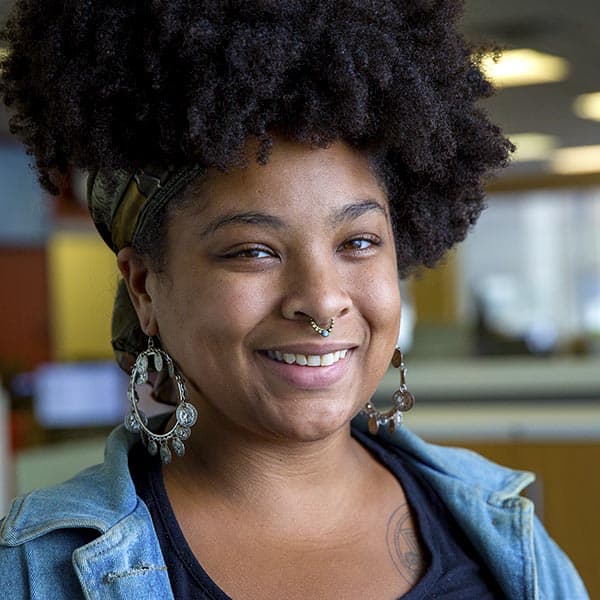Advertisement
The ARTery 25
Dancer Ellice Patterson And Her Company Combat Ableism With Beauty
Resume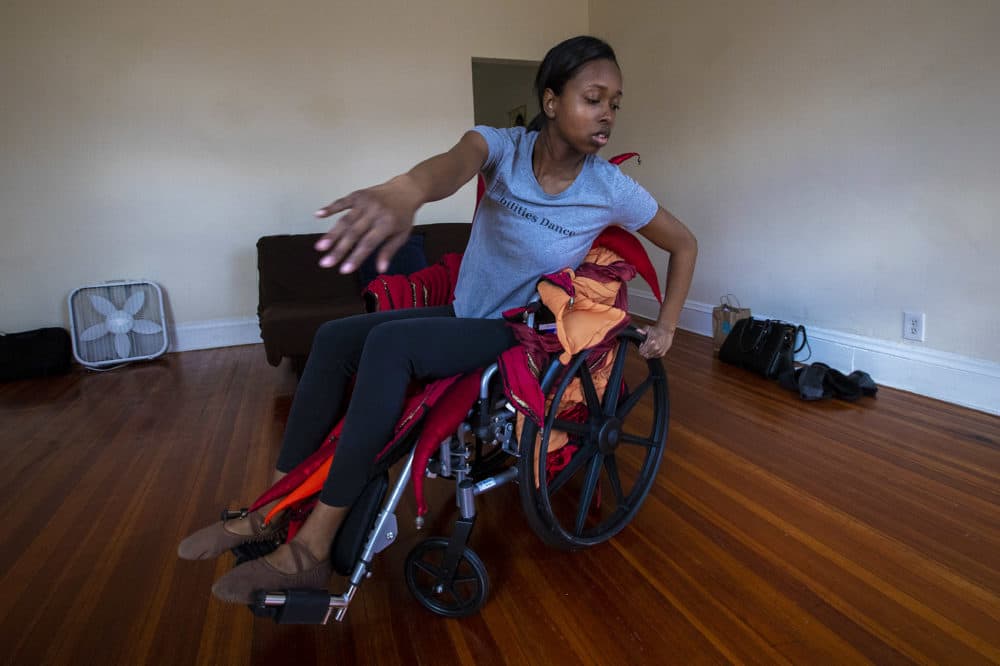
This profile is part of The ARTery 25, a series highlighting millennials of color making an impact in the Boston arts scene.
At her Brookline apartment, Ellice Patterson delicately lifts a leg in the air, using a walker draped in bright printed fabrics for balance. Her right arm unfurls into a graceful arch above her head and then she spins from the walker to a wheelchair and back. She’s dancing a piece from her upcoming solo “Trimodal,” a part of her dance company’s approaching show called “Audacity.”
She incorporates what she calls “The Wakanda Walker” and a motorized wheelchair called “Firebird” — sent to her by Opulent Mobility, an art studio that works with mobility aids -- into her dance routine. “It has a lot of red colors,” says Patterson. “It’s just kind of celebrating being Black and being disabled and also just elevating and making mobility aids beautiful.”
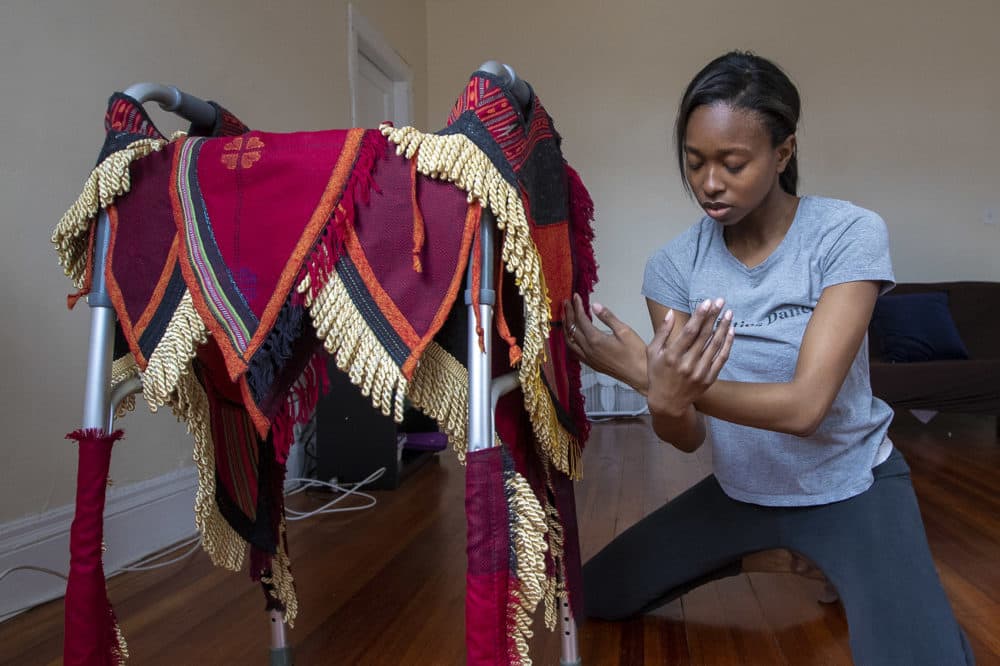
After a few minutes, Patterson takes a break and sits beside me on the hardwood floor in her living room. I notice the tattoo emblazoned across her forearm. It says “abilities,” with a walker serving as the “A.” Above it, a date.
“The date is when my body started to change,” she recounts. “The first change popped up almost nine years ago now. I had a spinal surgery that really affected the way I move.”
Patterson has danced since she was 4 years old, but after that spinal surgery in 2010, her mobility became limited and she found herself having to retrain her body.
She'd always loved dance and she didn't want to let it go, so she learned how to do it with a walker and, at times, a wheelchair.
"Even when my body started to change and I felt like I couldn't, I still found my way back to it and just kept moving forward,” she said.
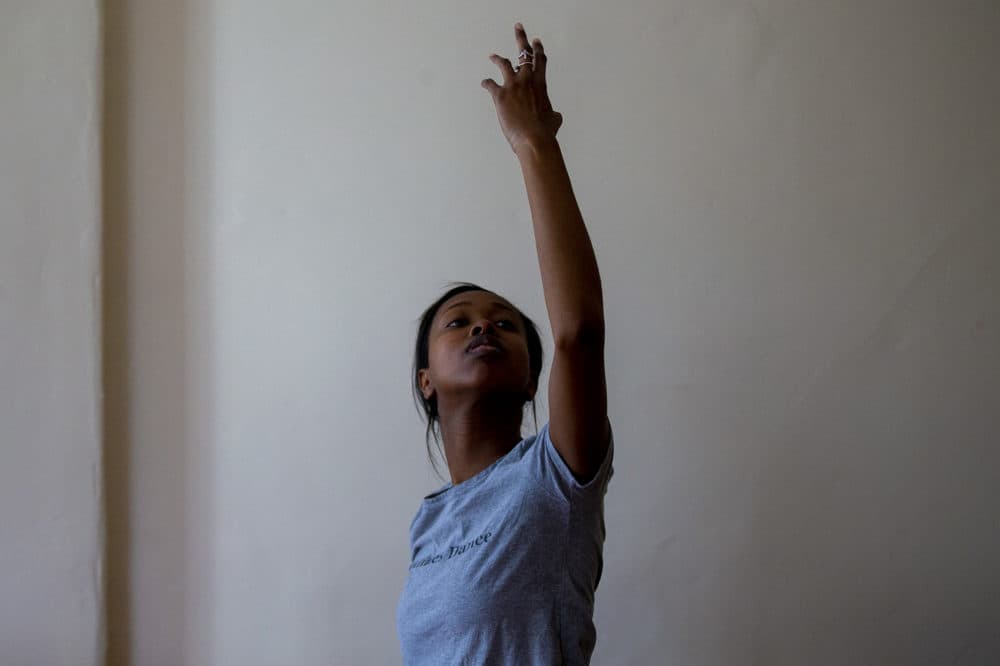
Soon Patterson felt compelled to share dance with everyone, including people who rely on mobility aids. She founded Abilities Dance Boston, an inclusive company focused on bringing accessibility into the dance world.
In the U.S., 54 million people live with a visible or invisible disability. More than 13 percent of Black Americans and 18 percent of Native Americans reported living with a disability in 2017. However, Patterson points out that a lot of the disability work being done centers white people living with disabilities. She aims to address this gap in disability activism.
“We’re focusing on the people of color,” Patterson says. “And not just that, but trans people of color and queer people of color with disabilities.” Her company operates at a unique intersections of race, gender and disability.
Dancer Lauren Sava joined Abilities Dance in 2017 and in two years, she’s gone from dancing to choreographing for the company. “I think dance companies can end up all looking for the same type of dancer,” she says. “Like perfect technique and fitting the mold of your perfect ballerina.”
For Sava, Abilities Dance offers a more nuanced approach to dance and movement. “What Ellice is looking for [in her dancers] is much more well rounded,” she said. “And makes it much more of a dynamic company because you have people representing all different backgrounds and abilities.”
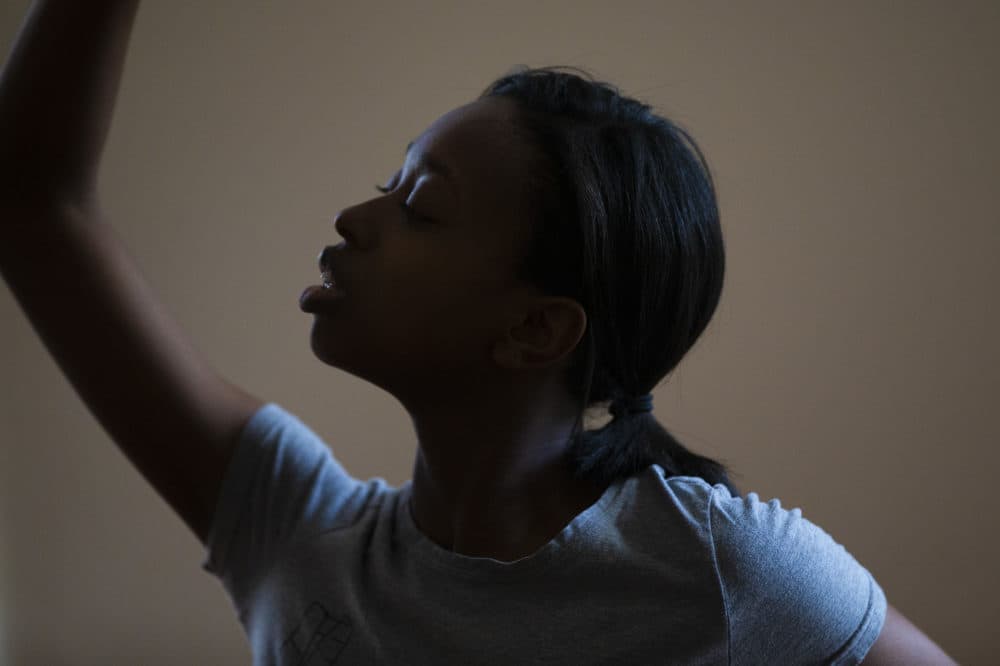
Before receiving one of the 2018 Live Arts Boston (LAB) grants from the Boston and Barr foundations, Patterson found that outdated attitudes about disability seemed like a barrier to securing funding for Abilities Dance. She felt pressure to perform or emphasize her disability.
“Last year and this year too, finding out that we had been rejected for a number of grants from a number of different organizations,” Patterson expanded. “Because of, reasons around I didn't look like I had a disability and I danced too well to have a disability or I didn’t say how dance was a challenge for me.”
In Boston, 12 percent of the population reports living with a disability, yet resources remain systemically inaccessible. “Someone shouldn't have to request CART on an event ticket,” Patterson says. “It should just already be there or an ASL interpreter or braille programs.”
For her, creating space to challenge antiquated attitudes about disabilities is her driving force. She hopes her dance practice shows the wide spectrum of beauty and movement. Back in her living room, as she swirls across the hardwood floor, I'm reminded that human variation is the norm, not the exception.
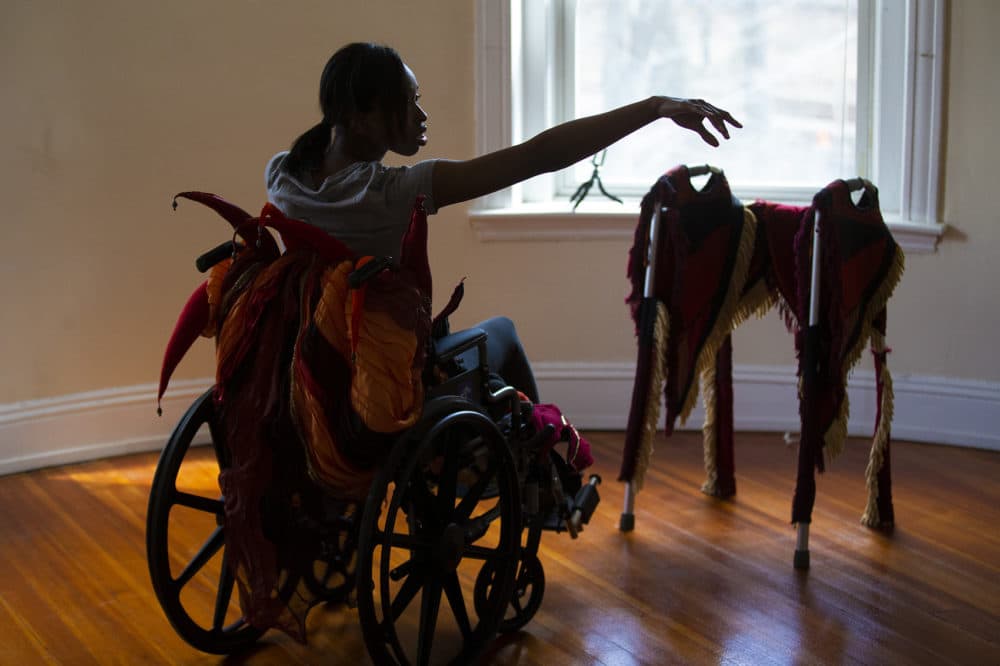
This segment aired on March 28, 2019.
